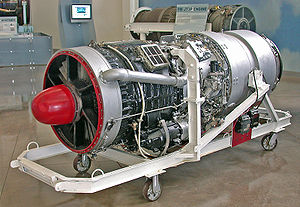
Back Rolls-Royce Avon AST Rolls-Royce Avon Czech Rolls-Royce Avon German Rolls-Royce Avon Greek Rolls-Royce Avon Spanish رولز-رویس اون Persian Rolls-Royce Avon French Rolls-Royce Avon Galician Rolls-Royce Avon Hungarian Rolls-Royce Avon Italian
| Avon | |
|---|---|

| |
| Rolls-Royce Avon | |
| Type | Turbojet |
| National origin | United Kingdom |
| Manufacturer | Rolls-Royce Limited |
| First run | 25 March 1947 |
| Major applications | |
| Number built | >11,000 |
The Rolls-Royce Avon was the first axial flow jet engine designed and produced by Rolls-Royce. Introduced in 1950, the engine went on to become one of their most successful post-World War II engine designs. It was used in a wide variety of aircraft, both military and civilian, as well as versions for stationary and maritime power.
An English Electric Canberra powered by two Avons made the first un-refuelled non-stop transatlantic flight by a jet, and a BOAC de Havilland Comet 4 powered by four Avons made the first scheduled transatlantic crossing by a jet airliner.
Production of the Avon aero engine version ended after 24 years in 1974.[1] Production of the Avon-derived industrial version continues to this day,[2] Since 2015 produced by Siemens.[3][4]
The current version of the Avon, the Avon 200, is an industrial gas generator that is rated at 21,000–22,000 shp (15.7–16.4 MW). As of 2011, 1,200 Industrial Avons have been sold, and the type has established a 60,000,000 hour record for its class.[5]
- ^ Gunston 1989, p. 149.
- ^ "Rolls-Royce Avon 200 industrial gas turbine upgrade hits 100,000 hours". www.rolls-royce.com. Retrieved 13 October 2023.
- ^ Siemens Energy (2015). "NOTICE TO SUPPLIERS. Subject: Rebranding Components from RR to Siemens" (PDF).
- ^ "Rolls-Royce sells gas turbine business to Siemens - NS Energy". Retrieved 13 October 2023.
- ^ "Avon 200". Rolls-Royce. 15 May 2013. Archived from the original on 16 May 2013. Retrieved 4 June 2013.